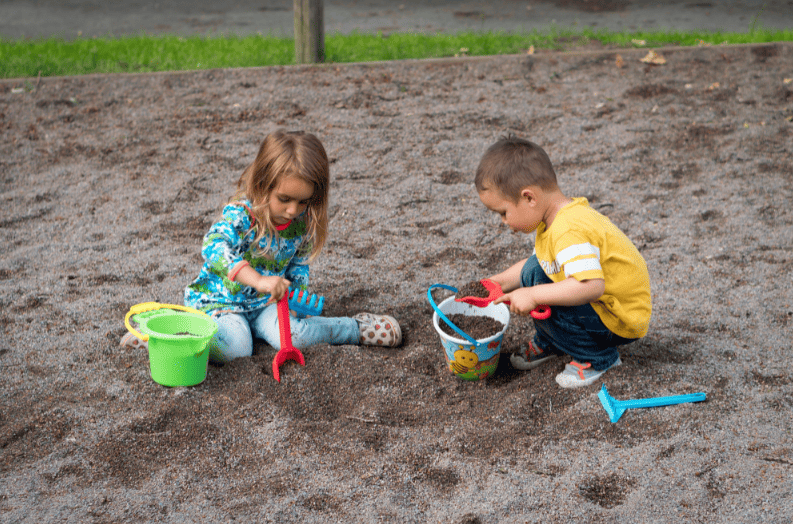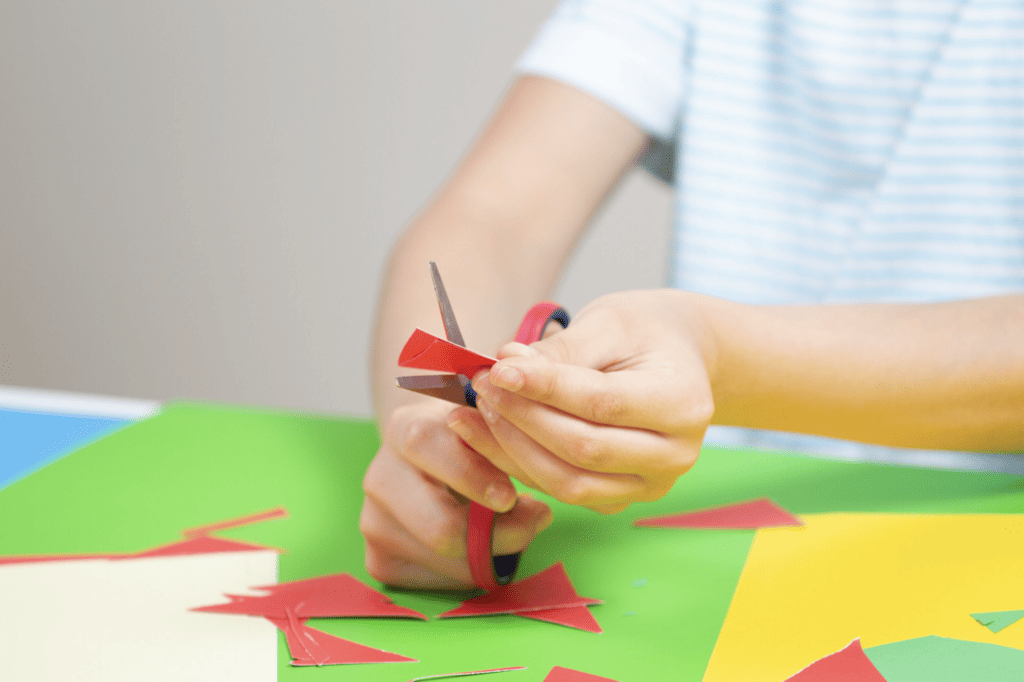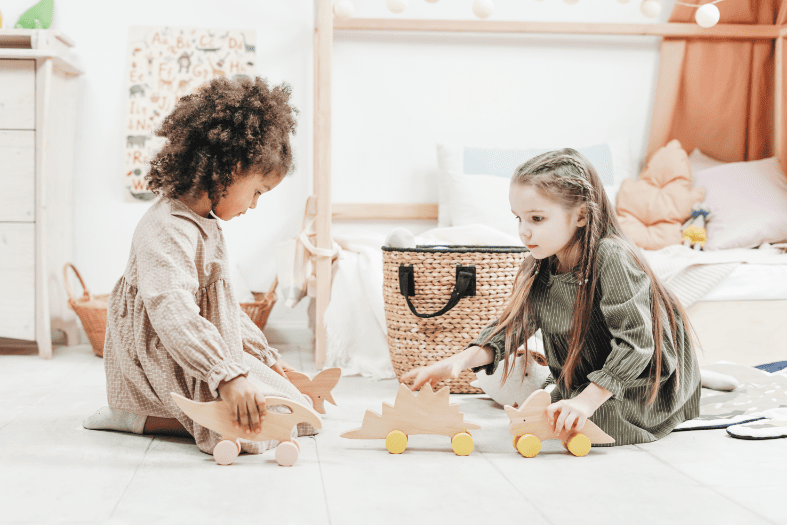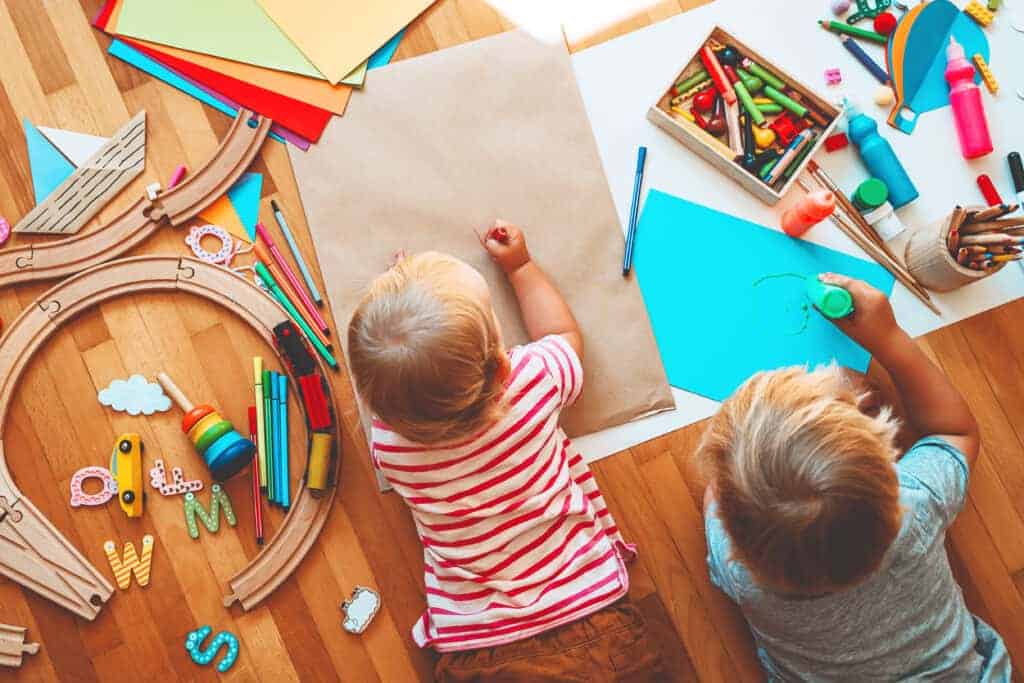As
So what is parallel play? Parallel play is one of the earliest developmental stages of play, typically emerging when children are around two or three years old. In parallel play, children engage in similar activities in the same space as each other without playing together or explicitly acknowledging the other’s presence.
So, why do children engage in parallel play, how is parallel play beneficial, and what can adults learn from parallel play? Read on to find out!

What Does Parallel Play Look Like?
Why is it important to know what parallel play looks like?
Imagine for a moment that you’re a first-time parent (though I’m sure many readers will not have to imagine this!): Your lively, active two-year-old loves to play at home.
You’re proud of her more recent ability to engage in focused play by herself, but her absolute favorite thing to do is to play with you and your partner.
She loves it when you play with her stuffed animals with her, and your partner can make her giggle for hours with even simple games like peek-a-boo. It’s the same with her grandparents, aunts and uncles, and even some of her older cousins.
Whenever she plays with adults or older children, she is highly engaged and aware, making steady eye contact and using whatever language she has to communicate with the other person.
It’s exciting to watch your daughter develop new social skills. So, when you run into a mom in the area with a child around the same age, you invite them over for a play date.
Maybe your daughter will make a new friend?!
But when they come over, your daughter seems to clam up. Instead of laughing and talking like she normally does, she plays quietly by herself on the floor a short distance away from her potential new friend.
Though it’s clear that she’s aware of his presence from how she occasionally looks over to watch him, she seemingly decides to ignore him and play by herself instead.
The child you invited over also seems disinterested in collaborative play. Even though he’s playing with some of your daughter’s toys, you start to wonder if he’s upset that she doesn’t seem interested in playing with him.
You’re worried that she’s feeling shy and you try to encourage the two children to play together, but both continue playing by themselves.
Eventually, the play date comes to an awkward end. When the boy and his mother leave, you start to feel even more worried and a little embarrassed.
Why was your daughter so standoffish?
Did she make the other child feel unwelcome?
Does she have some sort of fear or anxiety you didn’t know about before? Maybe you didn’t give her enough opportunities to play with children her age when she was younger and now she’s poorly socialized!
This is exactly why it’s so important to know what parallel play looks like. In this example, the parent sees parallel play behavior and becomes worried that it’s evidence of poor socialization or some sort of social anxiety, when the behavior is actually indicating the exact opposite!
One of the most important things to know about the developmental stages of play is that these are stages children go through with their peers.
While they might seem to be engaging in far more advanced types of play with their parents or grandparents or favorite babysitter, it’s important to remember that the adults are helping direct and structure these interactions.
The developmental stages of play show how children are developing in terms of their ability to engage in self-directed play.
For parallel play, this means that children are at the stage where they are aware of their peers and are beginning to show interest in them, but do not yet have the skills to initiate and maintain collaborative play.
When children are at this stage of development, you will notice them situating themselves near their peers, playing with similar (or the same) toys and materials, looking over to observe what their peers are doing, and sometimes even copying or mimicking their behaviors.
However, they will rarely, if ever, communicate directly with the children playing near them or try to engage them in their game.
So, what does this behavior mean and why is it such an important developmental stage?
How is Parallel Play Developmentally Beneficial?
Parallel play can best be viewed as a point on the continuum of the developmental stages of play.
The stages preceding parallel play are unoccupied play, solitary play, and onlooker behavior. During these stages, children move from a stage in which just moving their bodies in space constitutes “play” to a stage in which they’re able to stay focused on simple games and activities by themselves, to a stage where they begin to observe others at play.
Parallel play is the natural extension of these three previous stages. Children engaging in parallel play are using skills they learned in prior stages to try out a new way of playing.
Parallel play combines the motor skills and proprioception learned in unoccupied play, the focus and internal schemas learned in solitary play, and the mimicry and observation learned in onlooker behavior.
Children then take these skills to the next stage in parallel play by playing “with” their peers and practicing social behaviors through mimicry and observation.
If you think of these stages of play like a lesson in school, unoccupied play and solitary play are the prior learning, onlooker behavior is the lesson, and parallel play is the independent practice.
Though parallel play may not look like much, children engaging in this play behavior are learning a massive amount.
Parallel play helps children learn about communication, coordination, empathy, sharing, and other pro-social behaviors.
Through parallel play, children begin to develop an understanding of “self” vs. “other” and a richer understanding of peer interactions.
This is the beginning of their understanding of group identity as well, as they begin to see how they can create a “magic circle” that includes people beyond themselves.
Once a child becomes more comfortable and confident in parallel play, they may begin to move to associative play, and eventually to cooperative play, which are the next developmental stages of play.
How Can You Support Your Child in Learning Through Parallel Play?
The Montessori method is deeply rooted in child development, so
In a classroom,
Additionally,
For parents, knowledge of parallel play can help inform your approach to your child’s socialization and can provide insight into your child’s current developmental needs. Children engaging in parallel play are learning a lot about communication and collaboration, which might mean that they’re exploring these skills in different ways as well.
You can support them by helping them practice their communication skills and by verbally engaging them about what they’re noticing about others. As your child seems more interested in watching others play, this is a great time to ensure they have opportunities to engage in parallel play with their peers.
Parallel play is also a fantastic way to build healthy attachment systems for both children and adults.
Creating opportunities for safe, secure, and comfortable parallel play for your children and for yourself can help bring your family closer together!







